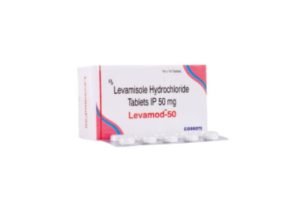
Here’s a detailed review of the Ampicillin + Cloxacillin combination, which is a commonly used antibiotic therapy:
Description:
Ampicillin + Cloxacillin is a combination of two penicillin-class antibiotics.
- Ampicillin is a broad-spectrum antibiotic that is effective against both Gram-positive and Gram-negative bacteria by inhibiting bacterial cell wall synthesis.
- Cloxacillin is a beta-lactamase-resistant penicillin that is effective against penicillinase-producing staphylococci, primarily Staphylococcus aureus, which are resistant to ampicillin alone.
This combination allows for the treatment of mixed bacterial infections that involve penicillin-resistant staphylococci as well as bacteria susceptible to ampicillin.
Brand Names:
- Ampiclox
- Moxclox
- Ampoxyl
- Aclox
- Amclox
Available Forms & Strengths:
- Capsules/Tablets:
- 250 mg/250 mg
- 500 mg/500 mg
- Oral Suspension:
- 125 mg/125 mg per 5 mL
- 250 mg/250 mg per 5 mL
- Injection (powder for reconstitution):
- 250 mg + 250 mg
- 500 mg + 500 mg
Uses:
The combination of Ampicillin and Cloxacillin is used to treat a variety of bacterial infections, including:
- Respiratory Tract Infections: Pneumonia, bronchitis, tonsillitis, and pharyngitis.
- Skin and Soft Tissue Infections: Abscesses, cellulitis, and wound infections.
- Bone and Joint Infections: Osteomyelitis caused by susceptible bacteria, especially penicillin-resistant staphylococci.
- Urinary Tract Infections (UTIs).
- Gastrointestinal Infections: Such as enteric fever and gastrointestinal infections caused by susceptible organisms.
- Post-operative Infections: As prophylaxis to prevent infections following surgery or treatment of established infections.
- Septicemia: Bloodstream infections caused by susceptible bacteria.
Side Effects:
Common side effects may include:
- Gastrointestinal: Nausea, vomiting, diarrhea, and abdominal pain.
- Allergic Reactions: Rashes, urticaria (hives), itching, and more severe reactions like anaphylaxis.
- Hematologic Effects: Rarely, anemia, thrombocytopenia (low platelet count), or leukopenia (low white blood cell count).
- Superinfections: Overgrowth of non-susceptible organisms like Candida or Clostridium difficile, leading to secondary infections.
- Injection Site Reactions: Pain, redness, or swelling if injected.
- Liver Function: Elevations in liver enzymes (rare).
Dose:
- Adults:
- Oral: 500 mg (250 mg Ampicillin + 250 mg Cloxacillin) 4 times a day.
- Intramuscular/Intravenous: 500 mg to 1 g (250 mg + 250 mg) every 6 hours, depending on the severity of the infection.
- Children:
- Oral: 50-100 mg/kg/day in divided doses every 6 hours.
- IV/IM: 50-100 mg/kg/day in divided doses every 6 hours, depending on severity.
- Duration: Typically 7-10 days, depending on the infection type and clinical response.
Contraindications:
- Hypersensitivity: Patients with a known allergy to penicillin or beta-lactam antibiotics.
- Severe allergic reactions to other beta-lactam antibiotics, including cephalosporins.
Drug Interactions:
- Allopurinol: Increases the risk of developing a rash when taken with Ampicillin.
- Oral Contraceptives: The effectiveness of hormonal contraceptives may be reduced when taking this antibiotic.
- Methotrexate: Co-administration with Ampicillin can increase the risk of methotrexate toxicity due to reduced clearance.
- Probenecid: May increase blood levels of both Ampicillin and Cloxacillin by inhibiting their renal excretion, potentially increasing side effects.
Warnings:
Allergic Reactions: As with all penicillins, Ampicillin + Cloxacillin can cause severe allergic reactions, including anaphylaxis, which requires immediate medical attention. Always inform the healthcare provider of any previous allergic reactions to penicillin or related antibiotics.
- Renal Impairment: Patients with kidney dysfunction may require dose adjustments to prevent drug accumulation and toxicity.
- Superinfection Risk: Prolonged use can lead to the overgrowth of non-susceptible organisms, such as Clostridium difficile or fungi (like Candida), leading to conditions like pseudomembranous colitis.
Special Considerations:
- Pregnancy: Ampicillin + Cloxacillin is considered Category B in pregnancy, meaning animal studies have not shown risk to the fetus, but there are no well-controlled studies in pregnant women. It is generally considered safe during pregnancy when prescribed by a healthcare provider.
- Breastfeeding: Small amounts of Ampicillin and Cloxacillin are excreted in breast milk. Although considered generally safe for breastfeeding women, there is a possibility of sensitizing the infant to penicillin or causing gastrointestinal disturbances.
- Pediatric Use: The combination is commonly used in children but must be carefully dosed according to body weight.
Doctor Advised:
It’s important to complete the full prescribed course of antibiotics, even if symptoms improve early, to prevent the development of antibiotic-resistant bacteria. Inform the doctor if any history of drug allergies exists, particularly to beta-lactam antibiotics. In case of severe side effects like persistent diarrhea, rash, or signs of allergic reactions, seek medical attention immediately.
Conclusion:
The combination of Ampicillin + Cloxacillin is an effective therapy for a wide range of bacterial infections, particularly those involving penicillinase-producing staphylococci. It is commonly used in skin, respiratory, and soft tissue infections. The dual action covers both susceptible Gram-positive and Gram-negative bacteria. Monitoring for allergic reactions and gastrointestinal disturbances is crucial, especially in patients with a history of penicillin sensitivity.







